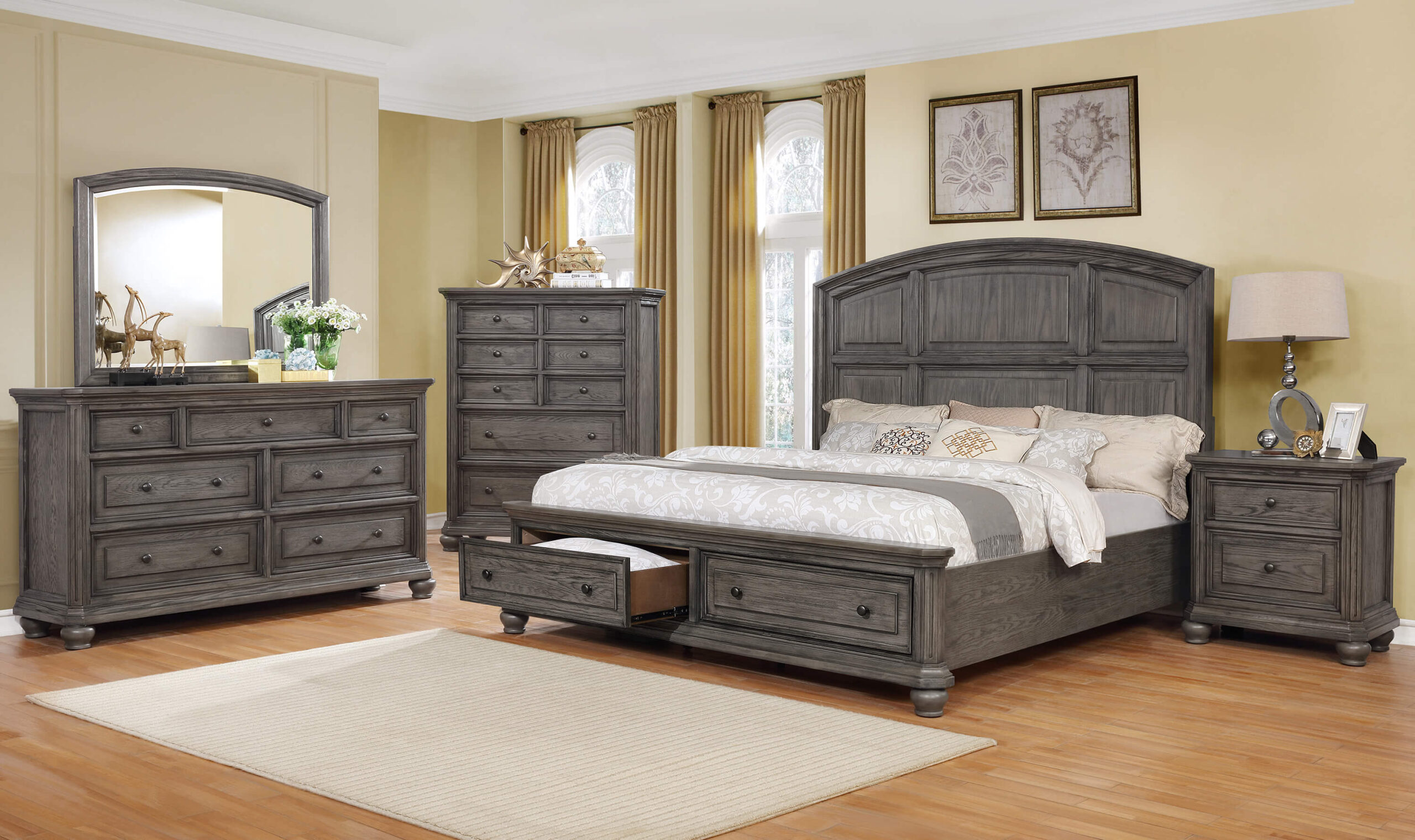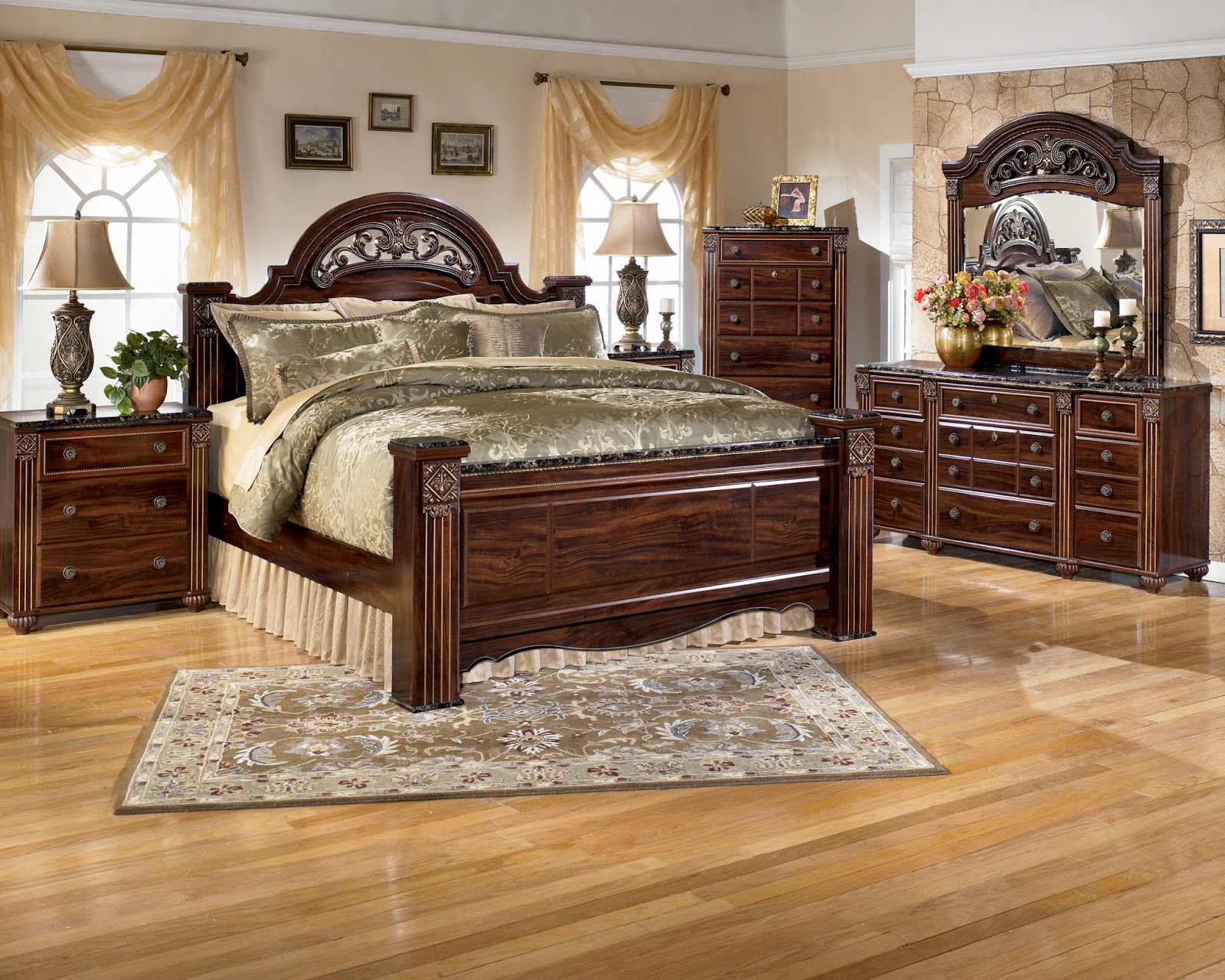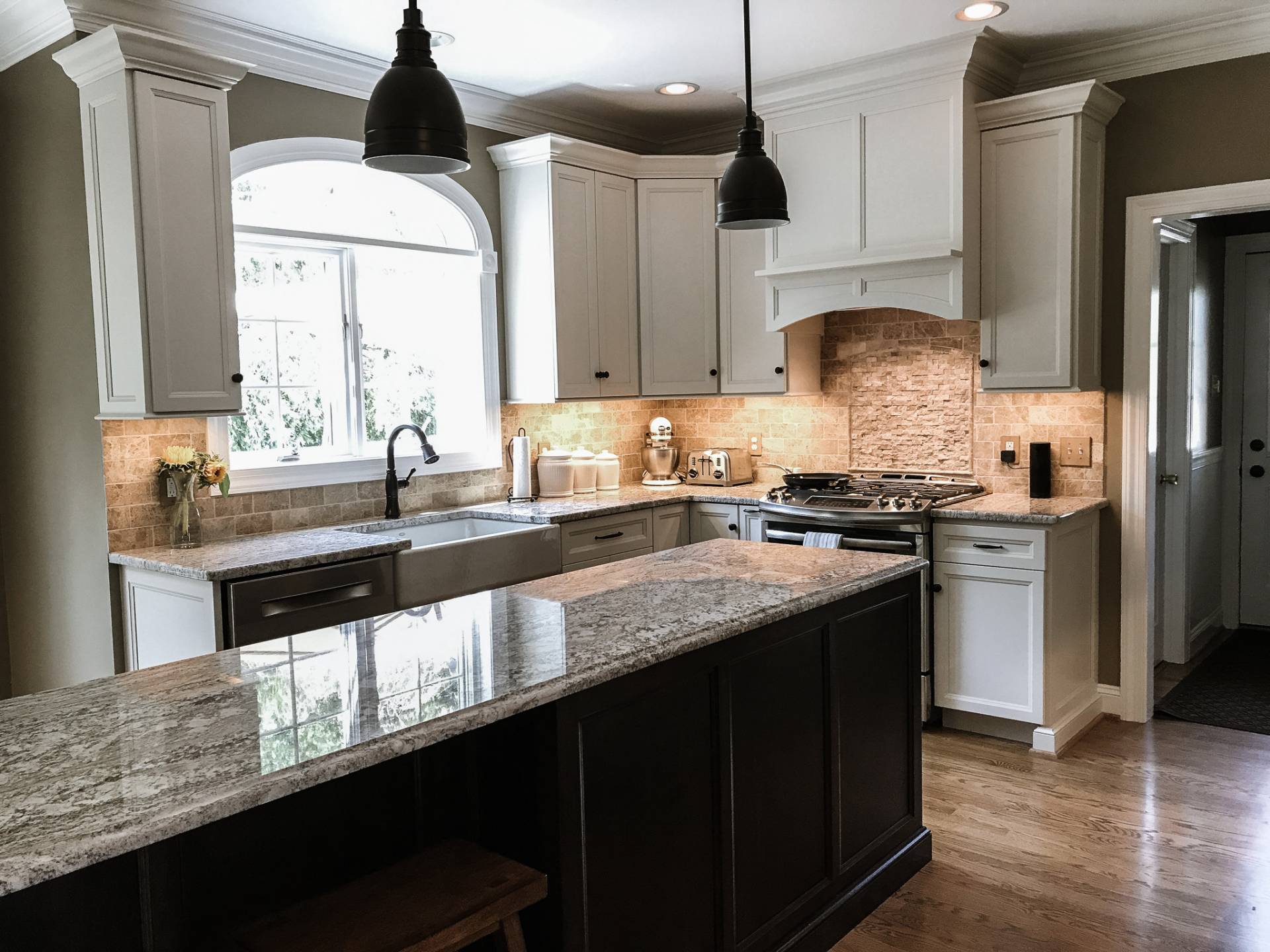Lighting is an essential part of any kitchen design and can quickly alter the atmosphere of the space. Choose a mixture of lighting to introduce a modern look and to combine it with a warmer, cozy feeling. From overhead lighting, to pendant lights, wall-mounted lamps and even under-cabinet lighting, adding different types and levels of light will bring your space to life. Experiment with dimming options to adjust the feel of the room depending on the situation, day or night.Adding Lighting to the Kitchen
Investing in quality kitchen appliances can really make or break a kitchen design. Whether you’re making a statement with an eye-catching refrigerator or seeking to upgrade appliances to save on energy costs, you don’t need to break the bank. With some research, you can find the perfect combination of appliances to suit your needs. Islands are a great place to install larger kitchen machines, like a double oven, to make your space feel more open.Choosing Kitchen Appliances
When designing a modern kitchen, use the right aesthetic elements such as a bold color scheme or contemporary lines. Incorporate different materials for visual effect and texture balance. From stone surfaces to wood accents, use diverse accents to create a dynamic space. Open shelves and floating islands can work to divide space and add a minimalist feel to your overall look.Using the Right Design Elements
When decorating your kitchen space, mix different textures, colors, and styles to add a feeling of balance. Using materials like cork, granite, or stainless steel will add visual interest and a sense of dimension. Accessories, such as plants, wall art, and table runners will bring an extra level of contrast while also injecting some personality.Using a Mix of Textures and Styles
The best way to make a statement with the colors of your kitchen is to use – you guessed it – primary colors. While it may be safe to stick with neutrals, primary colors can make a big difference. From bold reds and yellows, to serene blues and greens, opting for a colorful kitchen will make it a standout in the home.Working with Primary Colors
When designing any kitchen, it’s important to be mindful of floor space. In a smaller area, you can create the illusion of a larger space by considering how appliances and furniture overlap. Employing furniture pieces – like bar stools or kitchen carts – that can be tucked away when not in use is the perfect way to make a kitchen look and feel more spacious.Maximizing Floor Space
Effectively designing the kitchen is about so much more than just beauty. It is a place of function and utility, so understanding the needs of your family is key. Consider adding features such as kid-friendly areas or adjustable-height countertops to facilitate the needs of everyone. Thoughtfully consider the needs of smaller family members when it comes to your design.Considering the Needs of Family Members
Storage in the kitchen is often an issue, as is the case with many rooms. When designing a kitchen, keep in mind safe and practical storage solutions. Make sure you include wall-mounted containers, drawers, shelves, cupboards and other built-in options. Design plenty of storage shelves near the oven to stow away spices and cooking supplies.Pay Attention to Storage Requirements
Having a budget in mind will come in handy when it’s time to purchase materials and labor. Calculate the costs of materials, such as tile, cabinets, flooring, and countertops. Be sure to include the cost of a professional to install lighting or appliances, alongside decor and accents. Keeping track of costs will allow the design process to go more smoothly.Budgeting for Materials and Labor
Creating a cohesive design is key when it comes to kitchen decor. All the elements should work together, from cabinets, walls, countertops and accessories. Aim to create a unified atmosphere to keep the look and feel of the kitchen consistent. Try to stick with one designer idea from start to finish, like a certain color scheme or theme. This will help you create your dream kitchen in no time.Creating a Unified Design
Kitchen Design – The Most Important Space in Your Home
 A well-designed kitchen is a crucial part of any home. It’s the space where meals are cooked, where families gather to talk, and where guests are often entertained. Getting the design right is important for both the usability and aesthetic appeal of a kitchen.
A well-designed kitchen is a crucial part of any home. It’s the space where meals are cooked, where families gather to talk, and where guests are often entertained. Getting the design right is important for both the usability and aesthetic appeal of a kitchen.
Space and Layout
 The size of the kitchen and shape of the layout is an important consideration for kitchen design. When planning, it is important to think about the main activities that will take place in the space. This includes bearing in mind appliances that may be necessary for the lifestyle of the occupants. Additionally, it is important to plan how much countertop space is desired, and design the flow of the kitchen in a way that allows ease between the main areas.
The size of the kitchen and shape of the layout is an important consideration for kitchen design. When planning, it is important to think about the main activities that will take place in the space. This includes bearing in mind appliances that may be necessary for the lifestyle of the occupants. Additionally, it is important to plan how much countertop space is desired, and design the flow of the kitchen in a way that allows ease between the main areas.
Fixtures and Fittings
 Once the layout has been decided upon, it is time to choose the fixtures and fittings that will fill the kitchen. The selection of fixtures and fittings will depend on the style of the rest of the home. Whether homeowners are looking for a modern touch, a traditional one, or something eclectic, there is something for everyone in the range of kitchen designs available today.
Once the layout has been decided upon, it is time to choose the fixtures and fittings that will fill the kitchen. The selection of fixtures and fittings will depend on the style of the rest of the home. Whether homeowners are looking for a modern touch, a traditional one, or something eclectic, there is something for everyone in the range of kitchen designs available today.
Choosing Colors and Finishes
 When decorating a kitchen, the choice of colors and finishes can make or break the overall aesthetic. The hues and textures chosen for a kitchen can really enhance the look, feel, and atmosphere. From bold and bright shades, to subtle and neutral tones, the possibilities are endless. When choosing a color palette, it is important to be mindful of how the shades will work together, and how they will coordinate with the style of the rest of the home.
When decorating a kitchen, the choice of colors and finishes can make or break the overall aesthetic. The hues and textures chosen for a kitchen can really enhance the look, feel, and atmosphere. From bold and bright shades, to subtle and neutral tones, the possibilities are endless. When choosing a color palette, it is important to be mindful of how the shades will work together, and how they will coordinate with the style of the rest of the home.
Unique Details and Accessories
 Adding unique and personal touches to a kitchen design is an important element. A perfect way to do this is through the use of accessories. The right accessories can really elevate the design of a kitchen, whether it be a statement wall clock, a bold artwork, or vintage jars on the shelf.
Kitchen design is a creative and exciting process. By being mindful of space, layout, fixtures and fittings, colors and finishes, and unique touches, it is possible to create a kitchen that functions perfectly and is a true reflection of the homeowner’s style and personality.
Adding unique and personal touches to a kitchen design is an important element. A perfect way to do this is through the use of accessories. The right accessories can really elevate the design of a kitchen, whether it be a statement wall clock, a bold artwork, or vintage jars on the shelf.
Kitchen design is a creative and exciting process. By being mindful of space, layout, fixtures and fittings, colors and finishes, and unique touches, it is possible to create a kitchen that functions perfectly and is a true reflection of the homeowner’s style and personality.



































































































